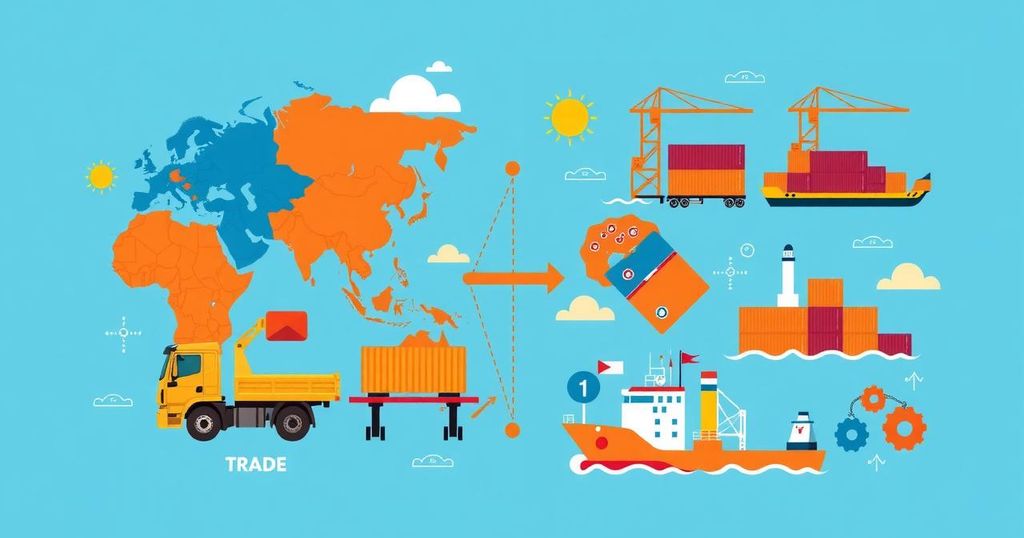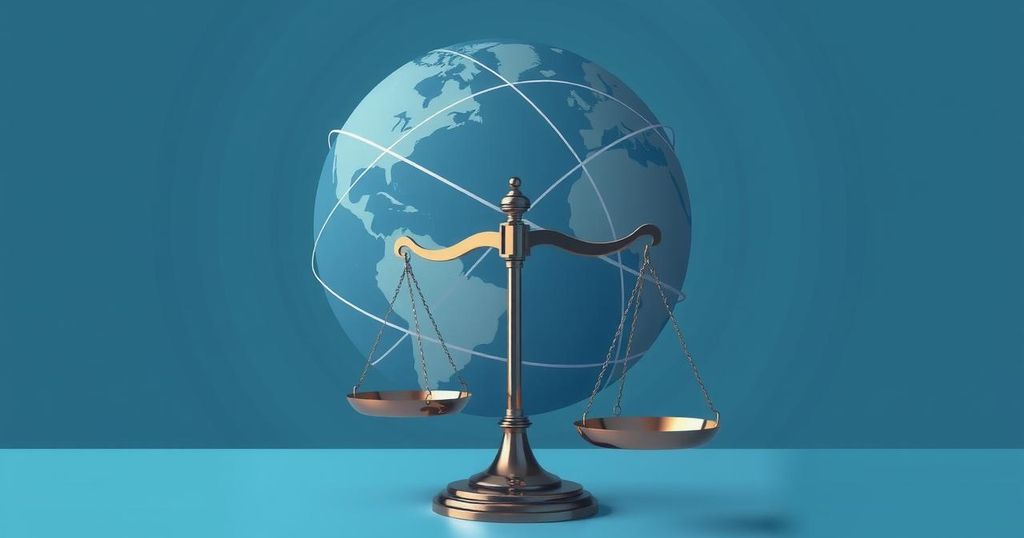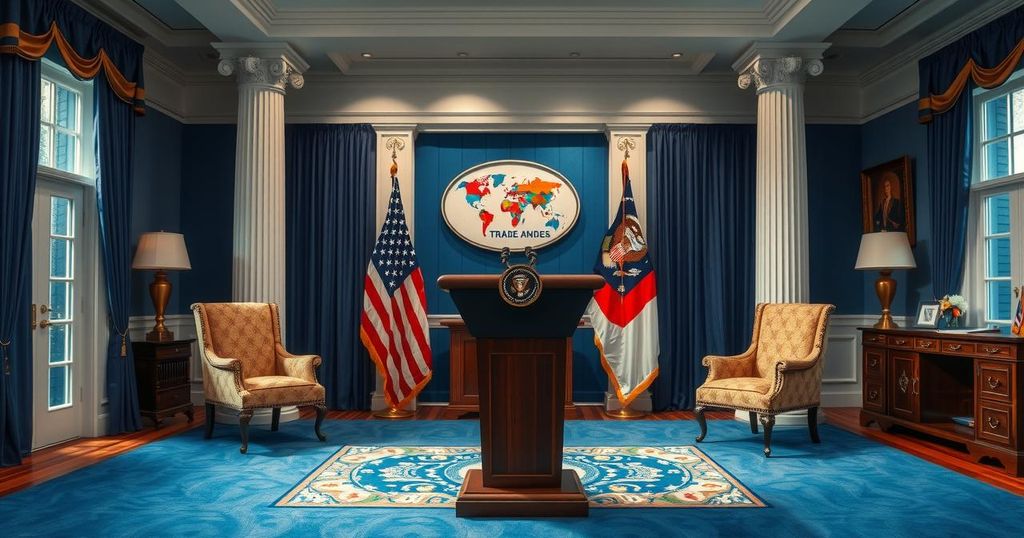India’s Strategic Considerations on Tariff Reductions with the U.S.
India is reviewing tariff cuts on U.S. imports valued at $23 billion as negotiations for a trade deal progress. The government aims to protect approximately $66 billion in exports potentially threatened by reciprocal tariffs. Discussions include broader tariff reforms and specific product negotiations, amid rising tensions over U.S. tariff policies under President Trump.
India is currently analyzing the potential implications of reciprocal tariffs from the United States that could affect approximately 87% of its exports valued at $66 billion. The Indian government is considering a reduction of tariffs on 55% of U.S. goods, which are presently subjected to tariffs ranging from 5% to 30%. These imported goods total over $23 billion, and India is prepared to significantly lower or completely eliminate some tariffs on these products.
Notably, the trade-weighted average tariff in the U.S. stands at about 2.2%, in stark contrast to India’s 12%. This disparity contributes to a substantial trade deficit for the U.S. with India, amounting to $45.6 billion. Following Prime Minister Narendra Modi’s visit to the U.S. in February, both nations initiated discussions for a trade deal, intending to address their ongoing tariff disagreements.
India’s willingness to cut tariffs is contingent upon the assurance of relief from reciprocal taxation. Discussions regarding tariff reductions are still preliminary, with alternative strategies such as specific sector adjustments being explored. India is also contemplating broader tariff reforms to systematically reduce barriers, although these discussions are in their infancy and may not be immediately relevant to ongoing negotiations with the U.S.
Despite Modi’s supportive gestures towards President Trump, the U.S. administration has labeled India a “tariff king,” with intentions to impose new tariffs. Should reciprocal tariffs be implemented, India anticipates an increase of 6% to 10% on key exports like machinery, electrical equipment, and pharmaceuticals, which are crucial to its economy. The imposition of new tariffs may allow competitors like Vietnam and Indonesia to gain a market advantage.
In the negotiations, India has outlined specific exclusions regarding tariffs, as products such as meat and dairy face proposed tariffs between 30% and 60%. Nevertheless, there is openness to consider lowering tariffs on certain nuts and cereals. Furthermore, India aims for gradual reductions in automobile tariffs, which are currently exceedingly high.
The complexities of these negotiations were discussed in a parliamentary standing committee meeting, where Trade Secretary Sunil Barthwal emphasized the importance of maintaining strong trade relations with the U.S. while prioritizing national interests. U.S. Commerce Secretary Howard Lutnick has urged India to adopt a broader approach as they engage in tariff discussions. However, experts suggest that the Modi administration is unlikely to pursue extensive tariff reductions as demanded by the Trump administration without considerable political costs.
In conclusion, India is navigating a delicate path regarding tariff negotiations with the United States as it contemplates potential tariff reductions on a substantial amount of U.S. imports. The Indian government recognizes the significant impact of reciprocal tariffs on its exports and emphasizes the necessity of protecting its national interests. With ongoing discussions and complex trade dynamics at play, the success of reaching a favorable trade agreement remains uncertain as both nations strive to balance their respective economic priorities.
Original Source: m.economictimes.com








Post Comment